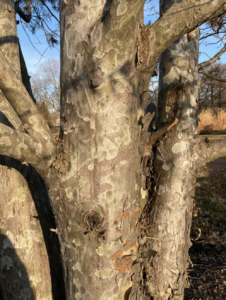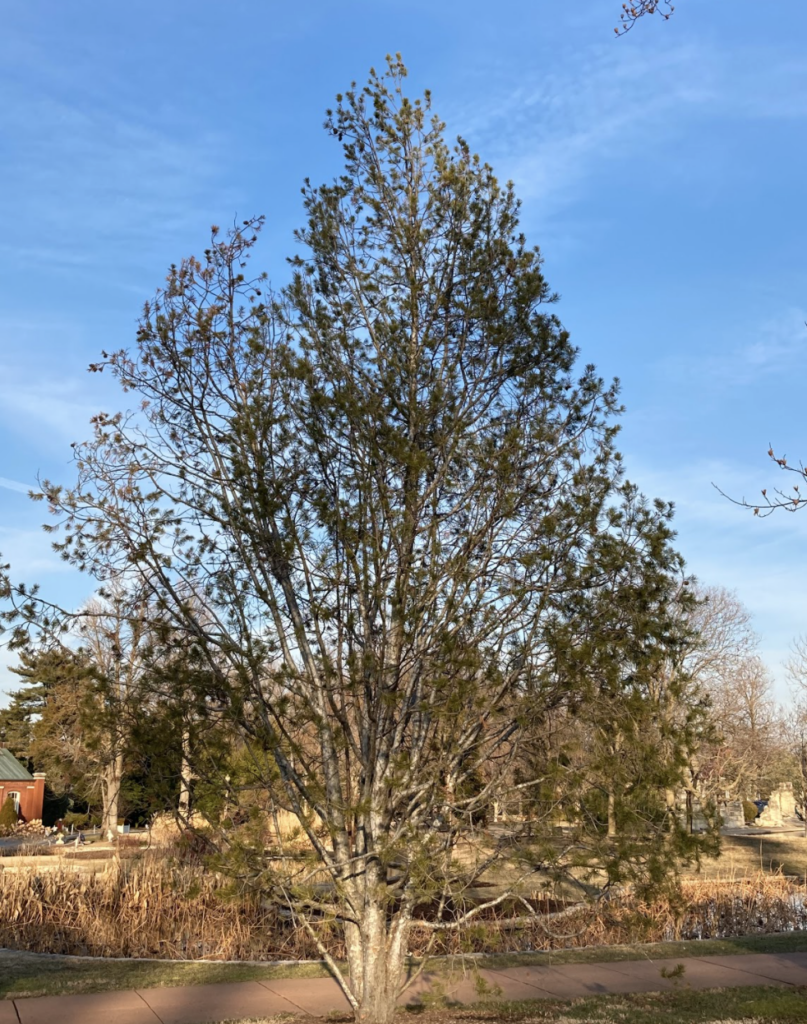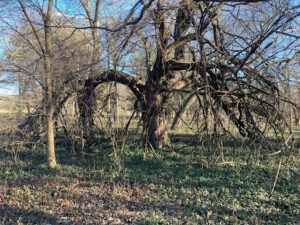Missouri is not a great place to grow needled evergreens. We have only two natives of this description, shortleaf pine and eastern red cedar, that favor the rocky hills of the Ozark plateau. Most of our soil is too rich in clay and too alkaline for these types of trees to thrive. Regardless of this fact, needled evergreens can be extremely useful landscape plants and some of them will do fine for several decades in our soils (although seeing, say, a white pine in its native environment where it ascends to over 100 feet will make you think twice about what a “nice looking” white pine in Missouri is).
 One of the upsides of this otherwise bad situation is that we can plant exotic conifers with little worry that they will escape captivity. The use of any non-native broadleaf should be tempered by consideration of such botanical curses as Callery pear, bush honeysuckle and tree of heaven, but conifers pose little threat in an environment as unwelcoming to their presence as ours. So if you find yourself looking for something with needles rather than leaves that will blend into a formal landscape, lacebark pine (Pinus bungeana) is a good option.
One of the upsides of this otherwise bad situation is that we can plant exotic conifers with little worry that they will escape captivity. The use of any non-native broadleaf should be tempered by consideration of such botanical curses as Callery pear, bush honeysuckle and tree of heaven, but conifers pose little threat in an environment as unwelcoming to their presence as ours. So if you find yourself looking for something with needles rather than leaves that will blend into a formal landscape, lacebark pine (Pinus bungeana) is a good option.
Native to Korea, lacebark pine rarely achieves 75 feet and in St. Louis maybe 30-40 feet would be a good specimen. It is not grown here for its size or shade though, but for its unique habit and bark. It tends to be a multi-stemmed and open tree, in the “almost a giant shrub” category that many ornamentals fall into. This open habit allows it to show off its most interesting feature, the one from which it takes its common name – the flaking, exfoliating bark. The colors and patches of this bark are variable and sometimes almost resemble an American sycamore when the trunk takes on a whitish color.
While not a good choice for screening or for the “Christmas Tree” look that many people desire in evergreens, lacebark pine makes an excellent and unique specimen tree for a formal garden, and will fare much better than the disease-ridden Scotch and Austrian pines that are dying a slow and unsightly death across our region.




